- Nimble handling due to low weight
- More off-road ability than most competitors
- Ergonomically sound cabin
- Lacking equipment, particularly safety kit
- Feels dated inside and out
- Value equation needs to be sharpened
Suzuki has a long history of creating small 4WDs and SUVs, going all the way back to 1970 with the original Jimny, mixing their penchant for making quirky kei cars with off-road ability. With increased interested in SUVs, Suzuki’s range of SUVs has broadened, and now includes the recently updated S-Cross small SUV. Slotting in between the tiny Ignis and the then-mid sized Vitara, the S-Cross started off life named as the SX4 back in 2006 and was one of the first SUVs in its size category. Has the 2023 Suzuki S-Cross Allgrip changed its recipe? Let’s find out.
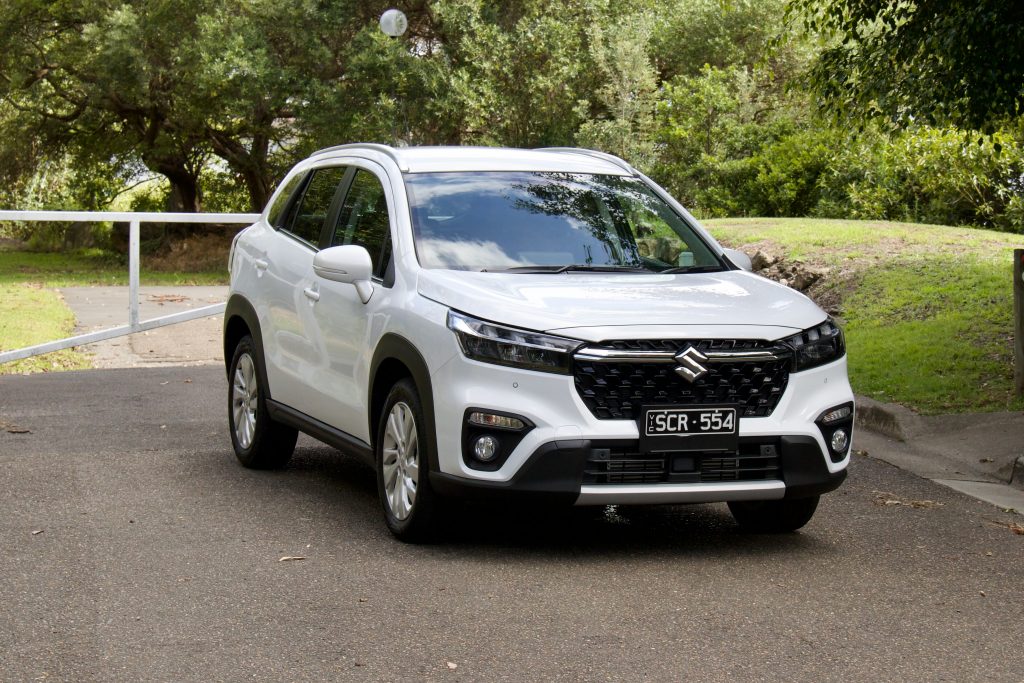
Skipping back to 2023, the S-Cross is now in its third generation, though the new generation is heavily based on the previous model. Has the update been enough to keep the S-Cross feeling fresh against the onslaught of rivals which have popped up over the years? Read on to find out if Suzuki’s refreshed SUV deserves to be on our shopping list, after spending a week behind the wheel of the S-Cross.
Price & Equipment: 6/10
The 2023 S-Cross range kicks off with the base model ‘S-Cross’, though we tested the second-from-bottom 2023 Suzuki S-Cross Allgrip, which is priced at $40,990 plus on-road costs or around $42,000 drive away, depending on location, which was the model we tested. The range tops out with the Prestige model, priced from $44,490 plus on road costs, or around $45,500 drive-away, depending on location.
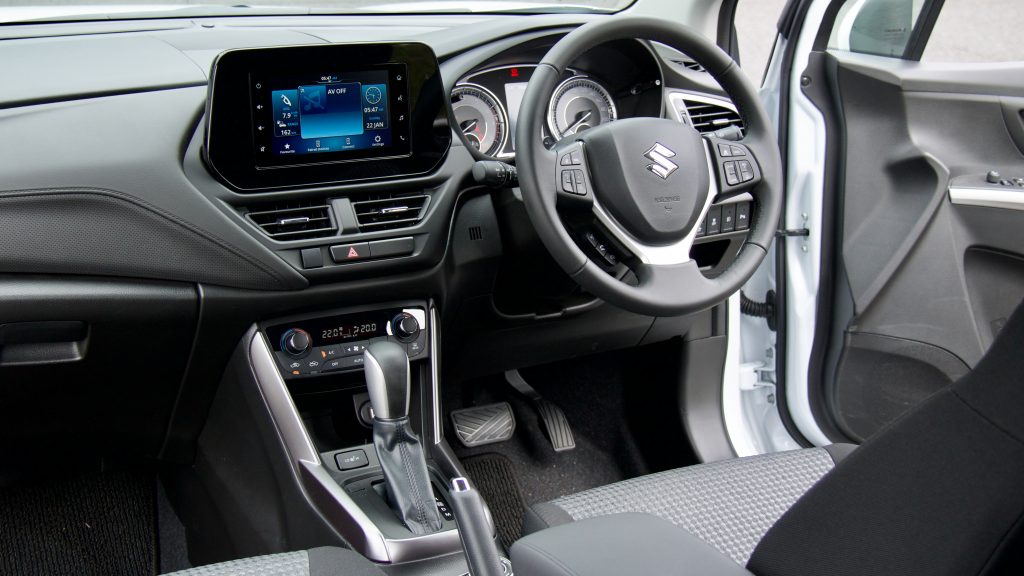
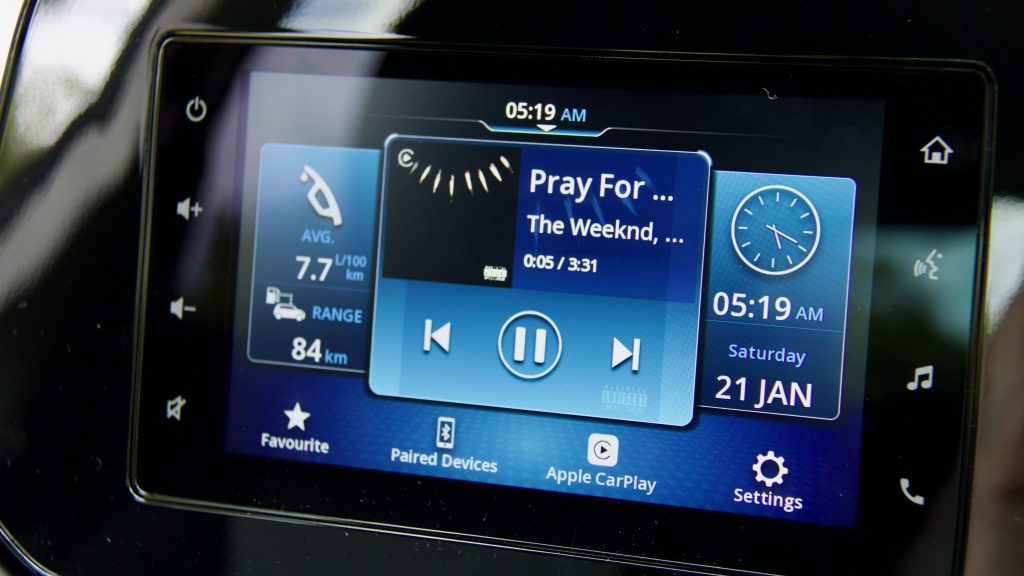
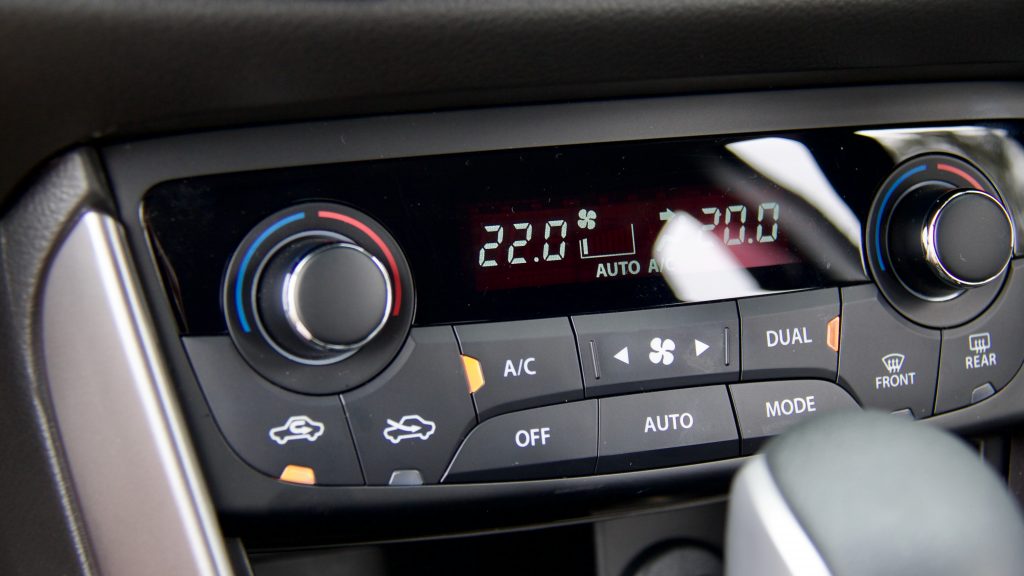
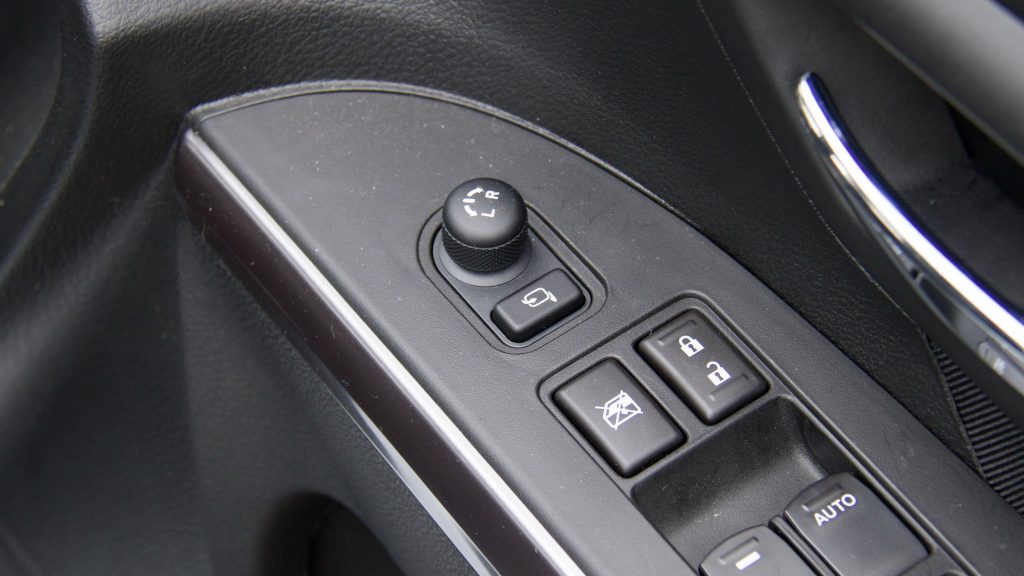
Standard equipment across the range includes dusk-sensing automatic LED headlights, front fog lights, 17 inch alloy wheels, keyless entry and start, an auto-dimming rear mirror, heated and electric-folding side mirrors, rain-sensing wipers, a leather steering wheel with gear shifters, dual-zone climate control, cloth seats with heating for the front row, a 7.0 inch touchscreen infotainment unit with wired Apple CarPlay and Android Auto, AM/FM/DAB radio and a six-speaker sound system.
The S-Cross has not been rated by ANCAP, but comes with six airbags, autonomous emergency braking (AEB), adaptive cruise control, a reversing camera, rear-cross traffic alert, blind spot alert, front and rear parking sensors and a lane departure warning system.
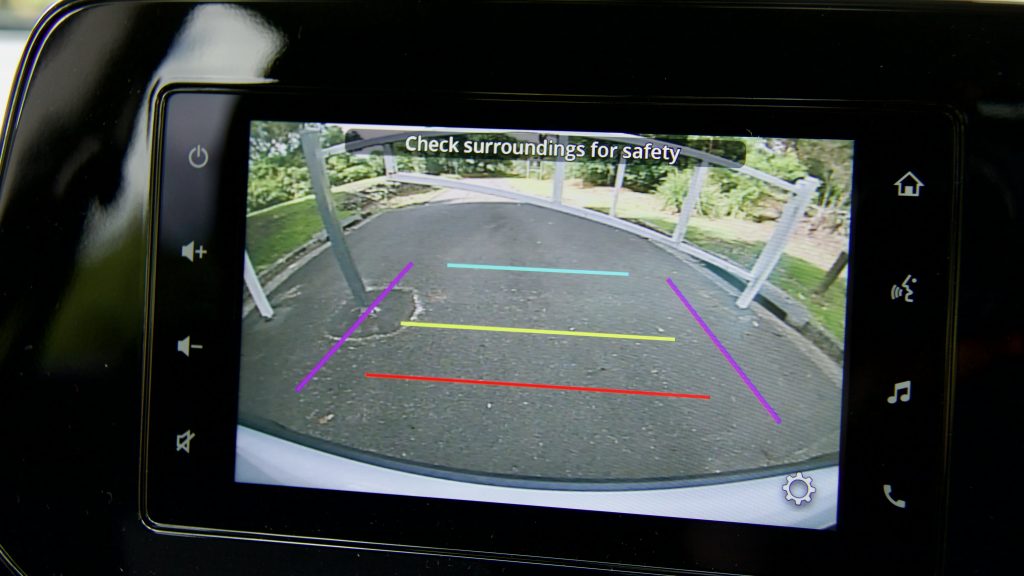
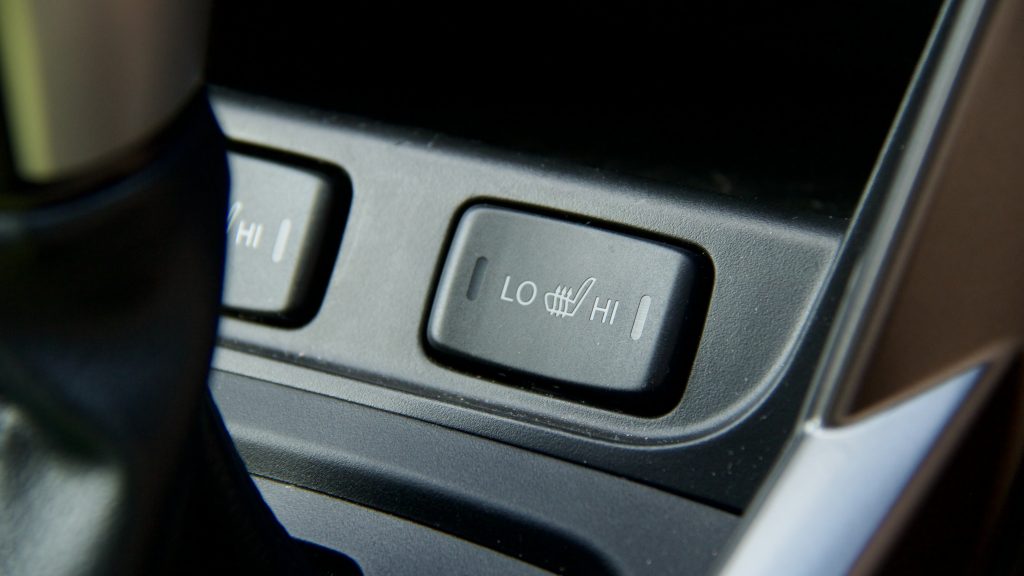
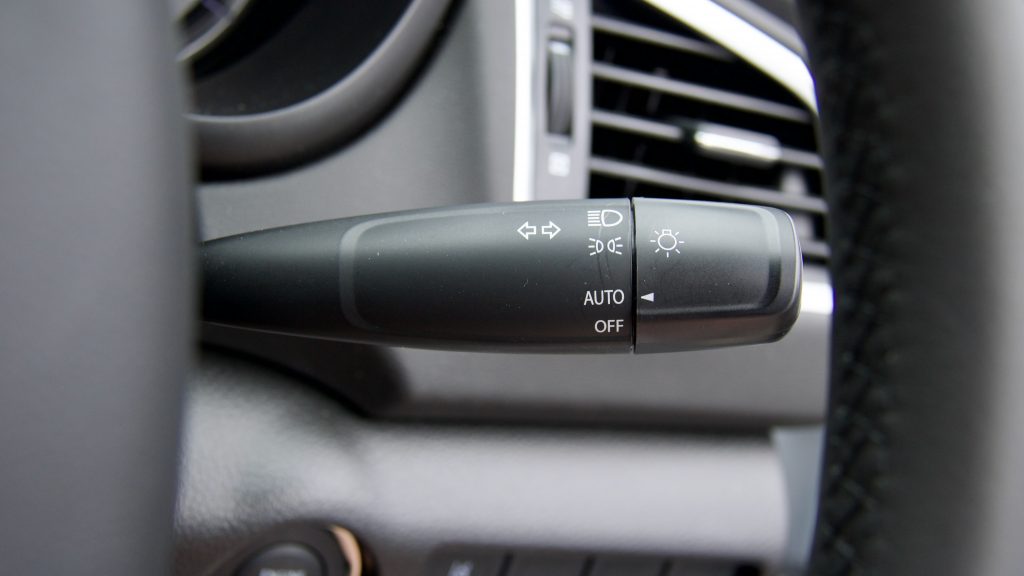
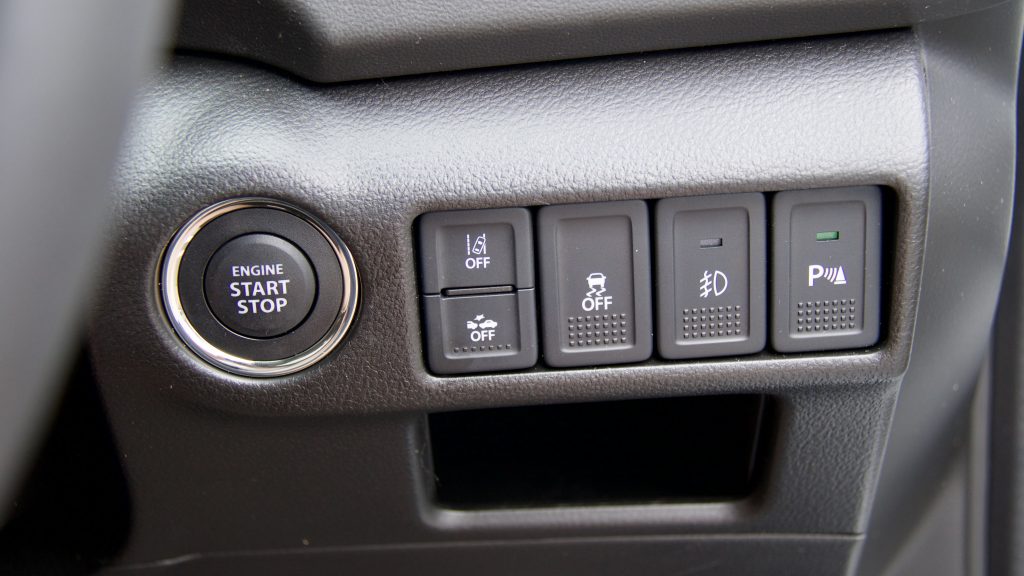
Options across the S-Cross range are limited to a choice of exterior colour – our test car came in ‘Cool White’, the singular no cost colour option. The premium colours ‘Cosmic Black’, ‘Sphere Blue’, ‘Titan Dark Grey’, ‘Energetic Red’ and ‘Silky Silver’ all attract a $695 premium. Black cloth is the only interior option.
The S-Cross has plenty of competition in the small SUV space, including the Mazda CX-30, VW T-Roc, Kia Seltos, Mitsubishi Eclipse Cross, Subaru Crosstrek and Toyota Corolla Cross. For (the majority) of drivers who probably don’t want AWD capabilities in their small SUV, options expand to include the GWM Haval Jolion, Honda HR-V, Nissan Qashqai and Skoda Kamiq. Out of this bunch, we think that the Subaru Crosstrek 2.0L (priced from around $39,500 drive away) and the Kia Seltos Sport+ AWD (priced from around $42,000 drive away) are the closest competitors to the S-Cross.
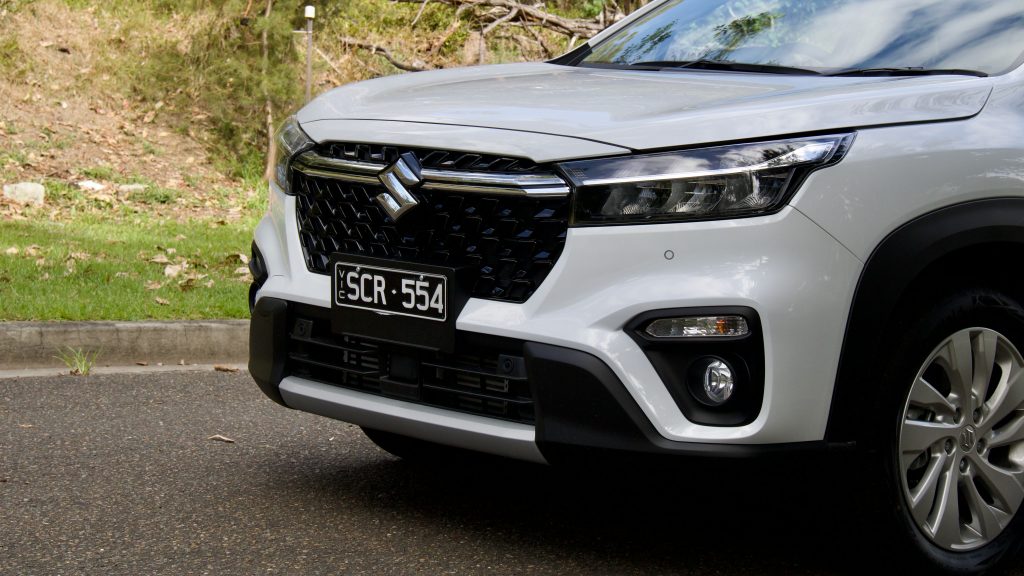
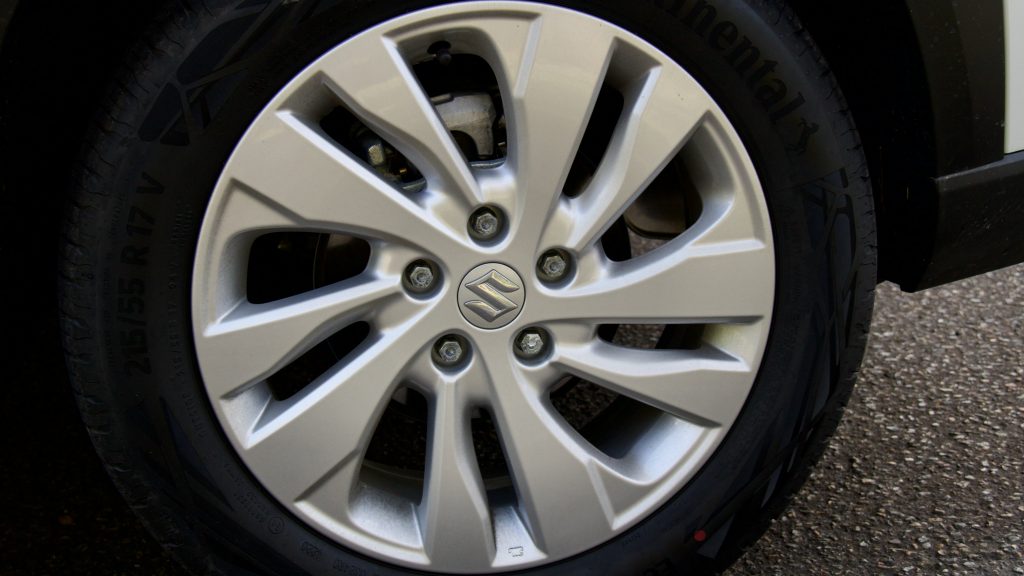
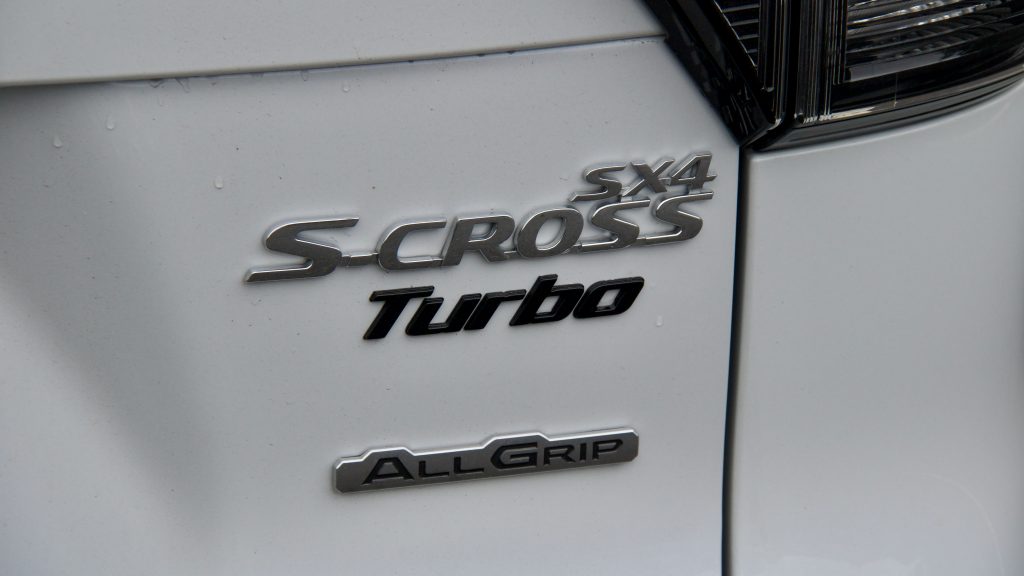
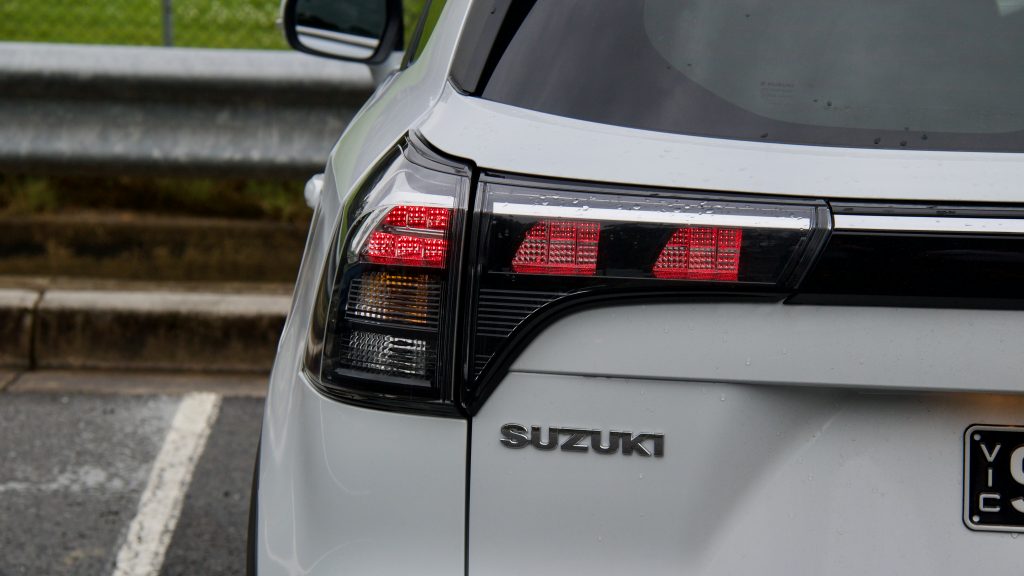
Even though it undercuts the S-Cross by $2,500, the Subaru Crosstrek AWD 2.0L is well featured by comparison, particularly with safety technology, featuring with front side radar, lane change assistance, emergency lane keep assistance, lane centring and departure prevention assistance, automatic rear braking, front brake light recognition, a tyre pressure monitoring system, an additional three airbags, an additional USB A and USB C port, wireless Apple CarPlay and Android Auto, a wireless charger and a much larger 11.6 inch information screen. The S-Cross on the other hand does feature front parking sensors, heated front seats, a leather steering wheel, heated side mirrors and an auto-dimming rear-view mirror.
The Kia Seltos Sport+ AWD features near identical pricing to the S-Cross and lacks LED headlights, automatic wipers, dual zone climate control, heated front seats and paddle shifters compared to the Suzuki. However, the Kia features blind spot and rear cross traffic collision avoidance, safe exit warning, lane keep and follow assistance, driver attention alert, front cross traffic alert and assistance, auto high beam, rear fog light, burglar alarm, more premium upholstery, auto-folding mirrors, a digital instrument cluster, satellite navigation, a much larger infotainment touchscreen and remote connected services – all of which the S-Cross lacks.
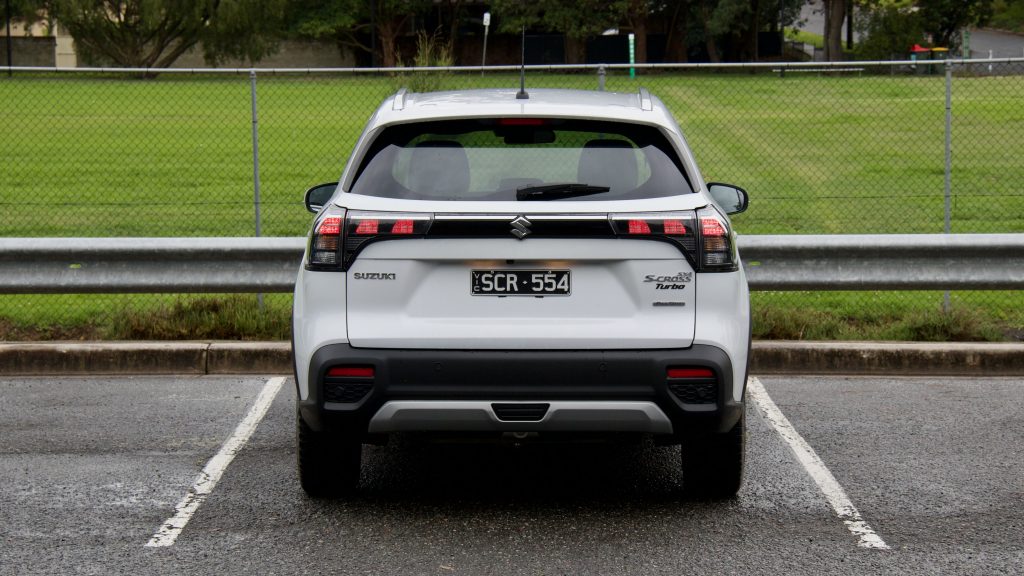
The 2023 Suzuki S-Cross Allgrip would make a lot more sense priced around the $37,000 mark, given competitors are offering more kit for the same or less money. For the majority of buyers who won’t ever venture off-road in their small SUV, there is even better value to be found in the many 2WD S-Cross sized SUVs that are on the market.
Performance & Economy: 8/10
The 2023 Suzuki S-Cross Allgrip features a carryover engine from the old model – the 1.4 litre turbocharged petrol unit puts out 103kW of power and produces 220Nm of torque between 1500 and 4000rpm, paired to a traditional six-speed torque convertor transmission sending power to all four wheels through a variable all-wheel drive system. While these outputs aren’t record breaking by any means, the S-Cross is light (for its size) so it performs better than expected. The S-Cross has enough pep to get up to speed from standstill, with relative ease. At highway speeds, the S-Cross is component enough, however asking for extra power for overtaking can push things a bit.
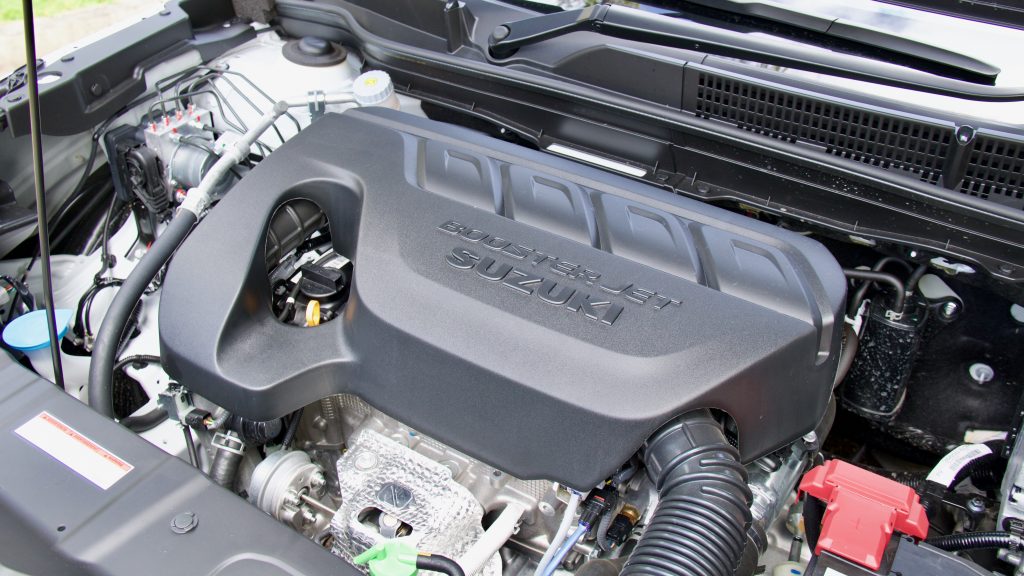
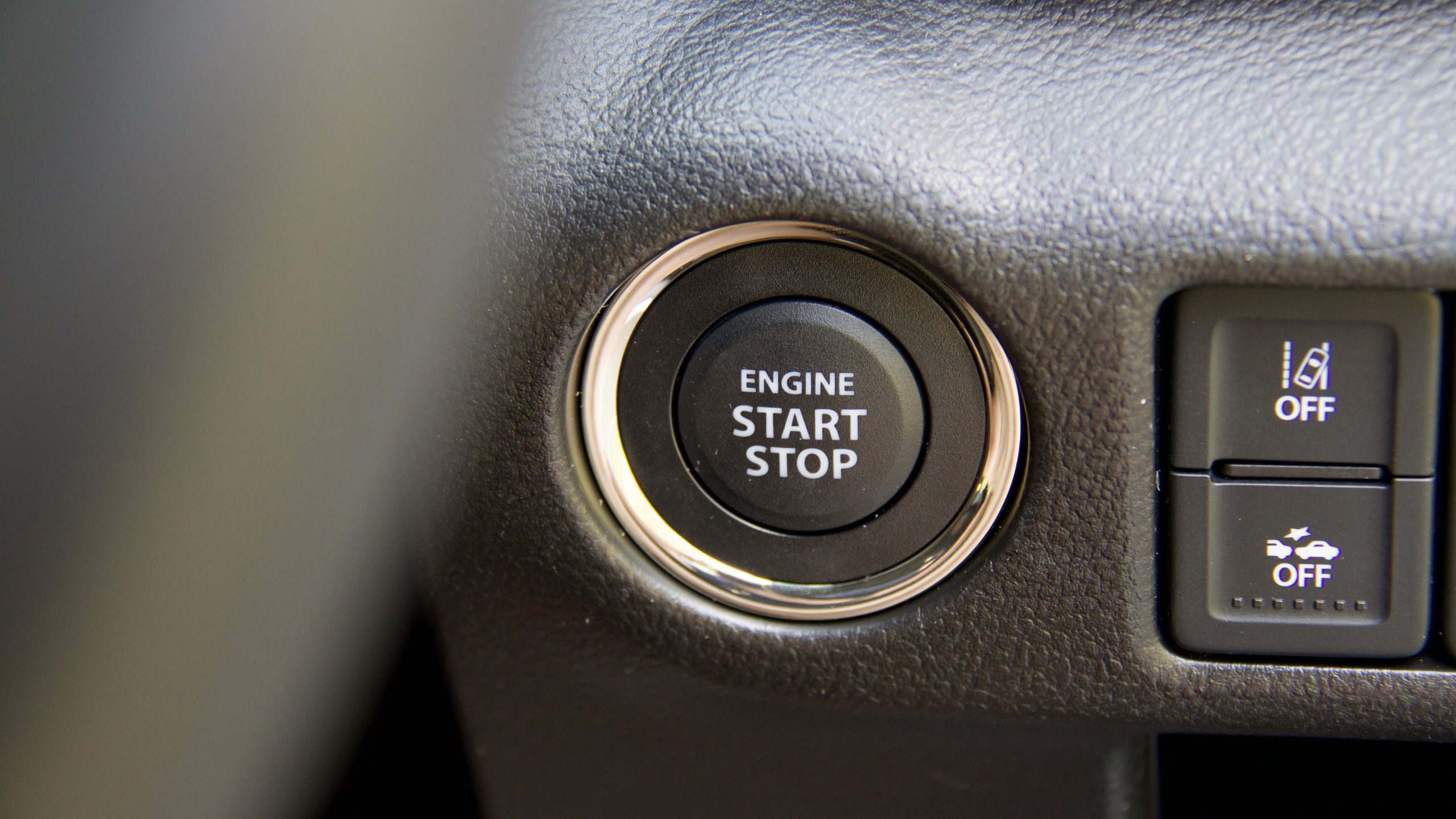
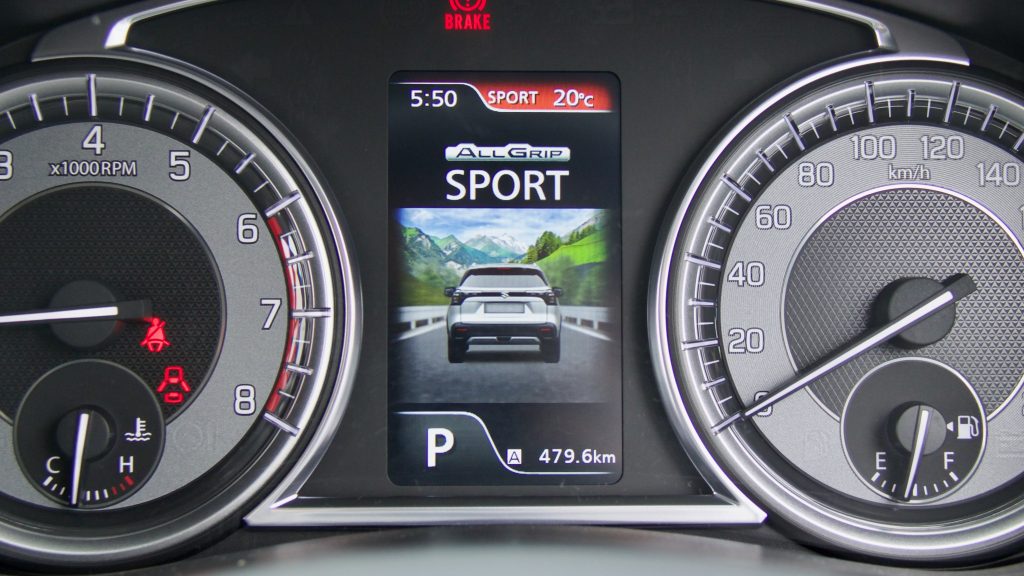
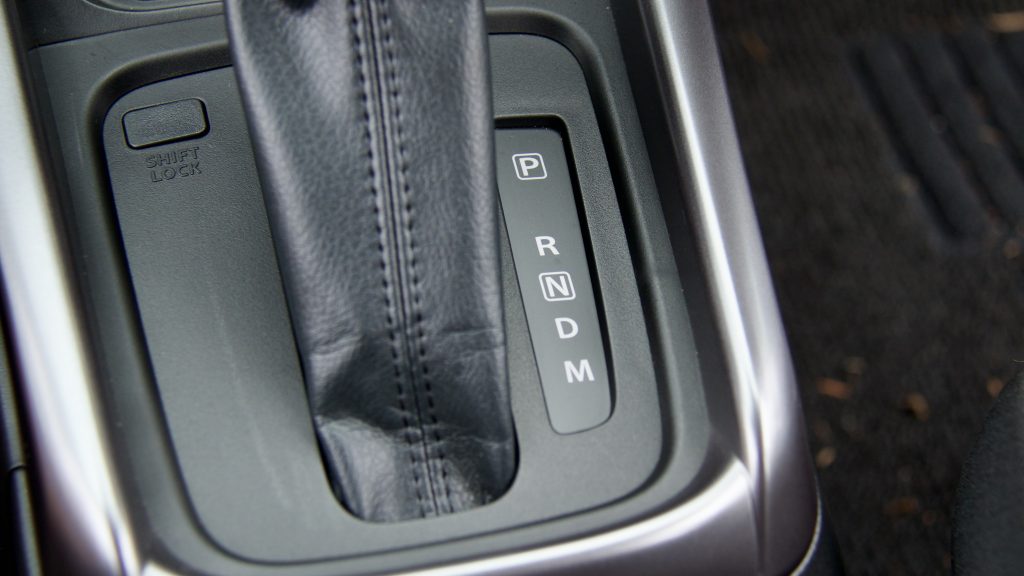
The torque converter transmission is fairly well matched to the engine, though can get caught out at times exhibiting indecisive and surprisingly (for a traditional automatic) jerky shifting. We also found the occasional hesitation from a standstill. Refinement wise, the engine is quiet enough that not too much noise from the drivetrain filters into the cabin.

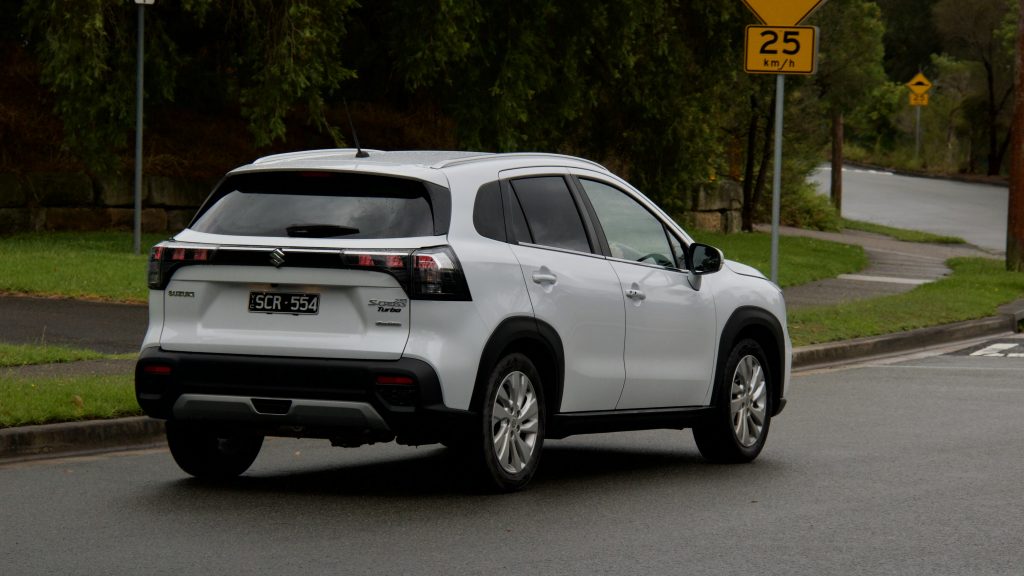
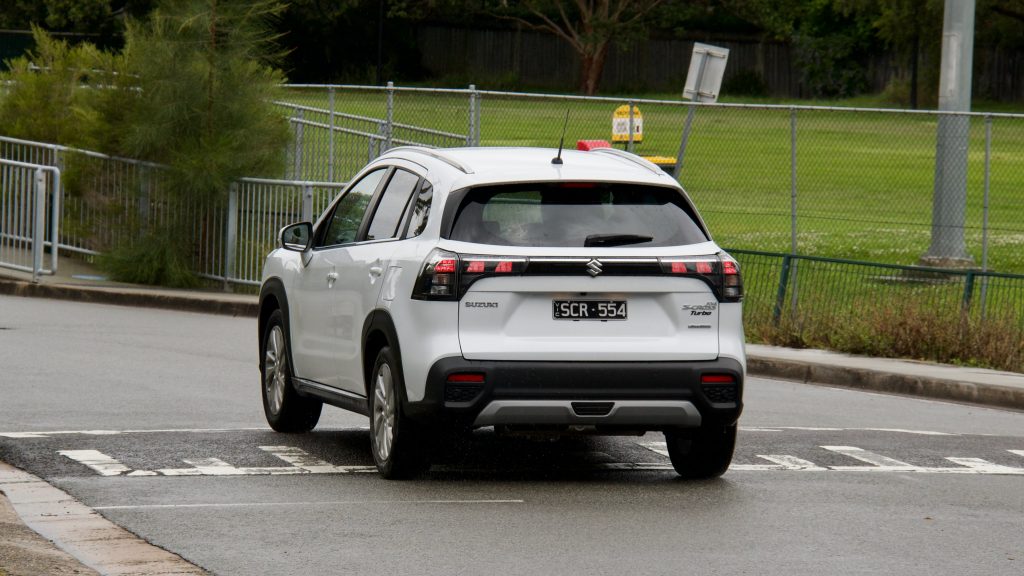
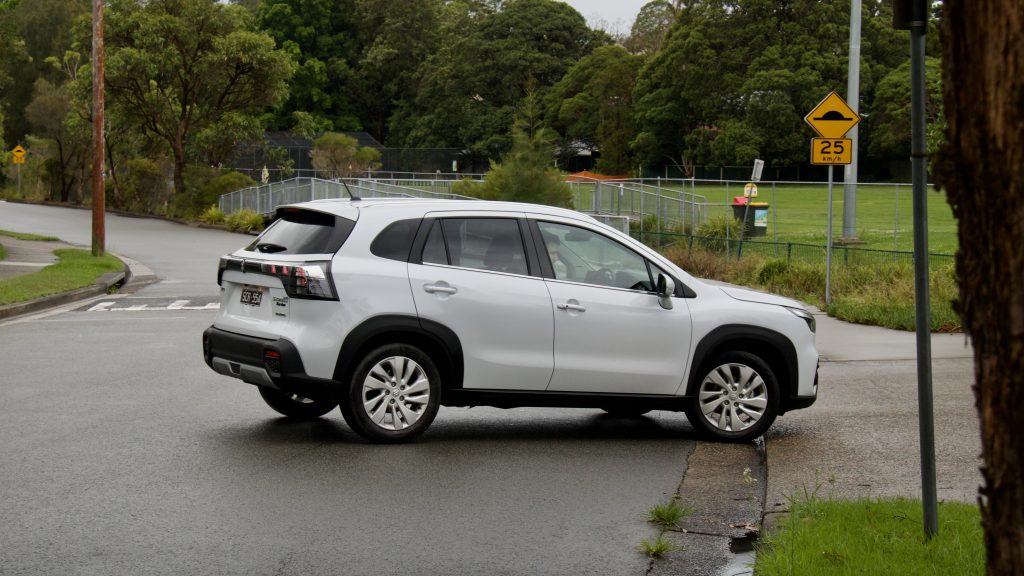
The claimed fuel consumption for the S-Cross Allgrip is 6.2L/100km and its claimed CO2 emissions are rated at 145g/km. During our week with the S-Cross, which was fairly evenly spread between highway and suburban driving, we couldn’t drop the figure below 8L/100km. Based on that consumption, a full 47-litre tank should yield a range of around 520kms.
Ride & Handling: 7.5/10
In the handling department, the 2023 Suzuki S-Cross Allgrip benefits again from its light (for the segment) weight, making it pleasingly agile to punt around in. We found the steering to be quite accurate, though light and somewhat lacking in feel. Pushing the S-Cross into corners revealed that under and oversteer were both kept fairly well at bay, though pushing much harder revealed the limitations of the drivetrain. We don’t think any of the small SUV target market will drive the S-Cross that hard, though will benefit from the predictable and secure feeling of driving the S-Cross normally.
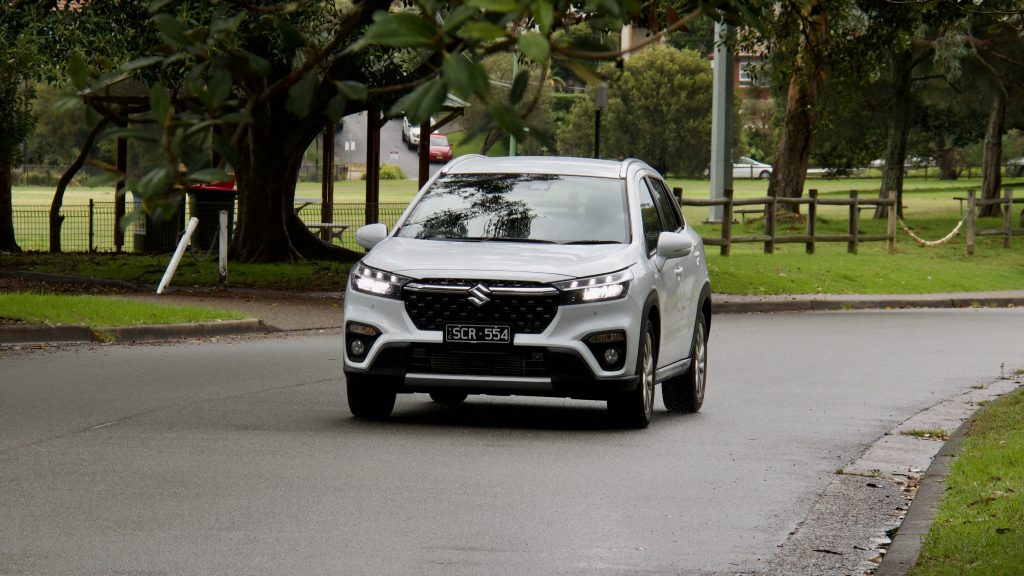
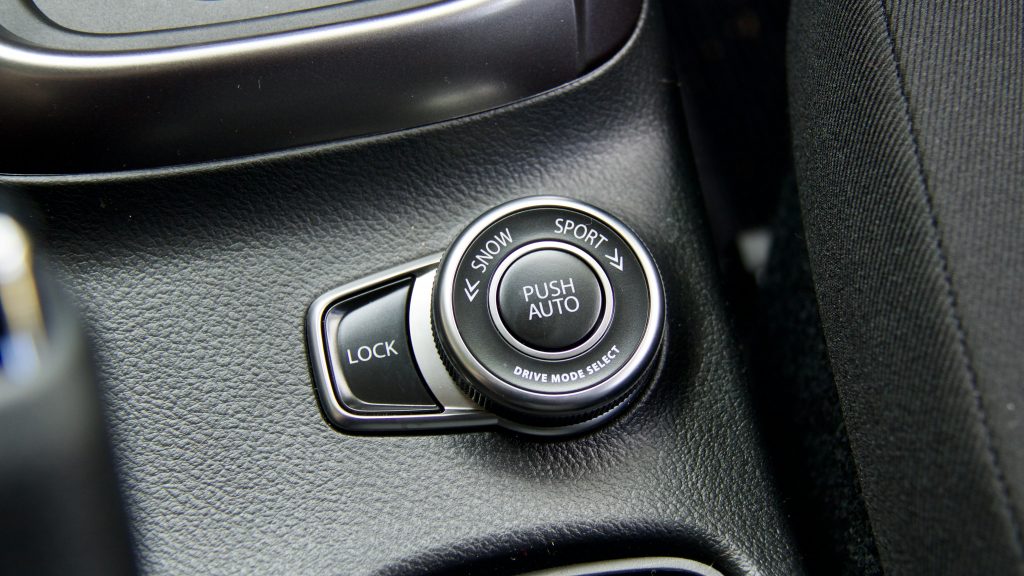
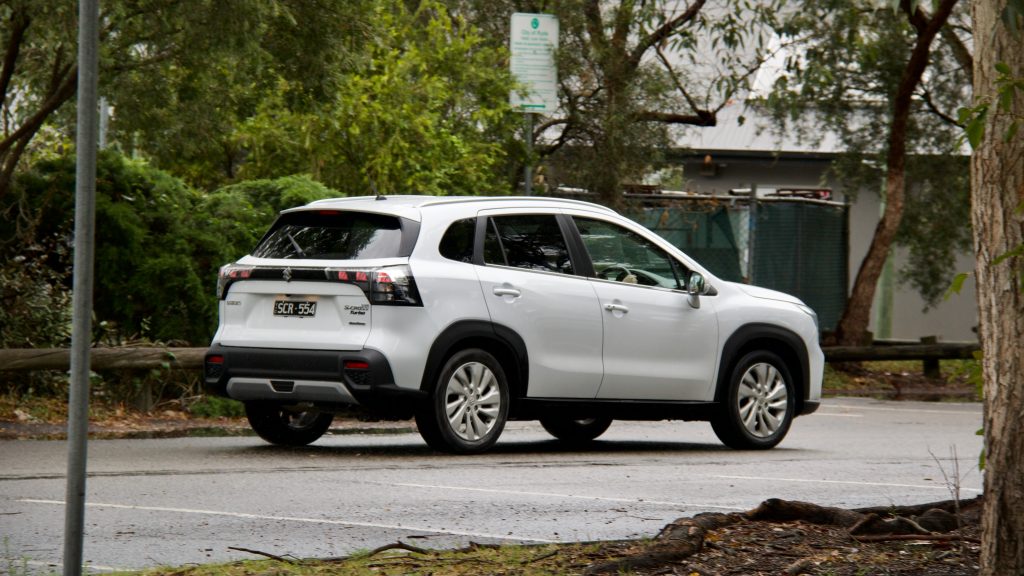
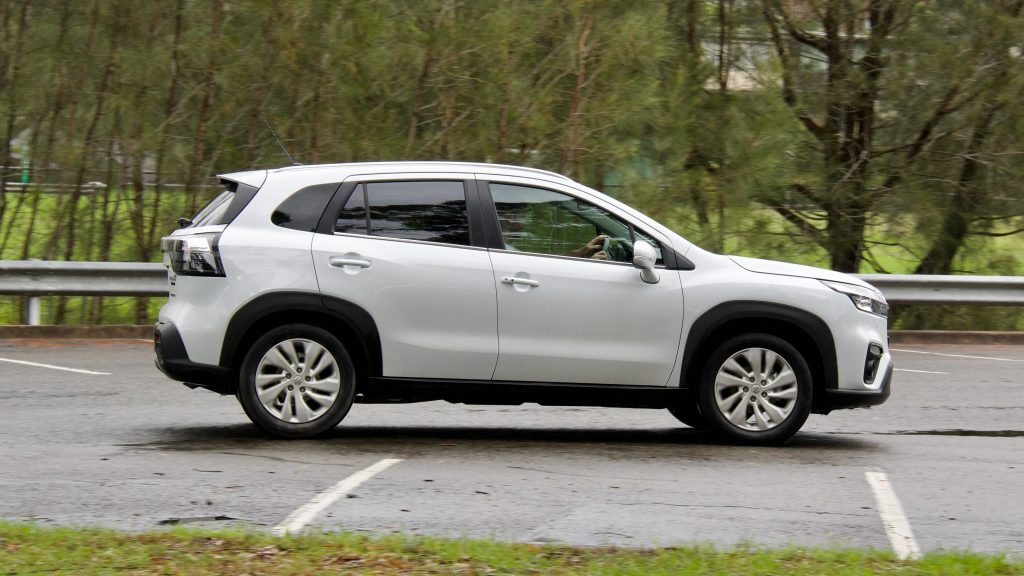
We didn’t take the S-Cross off-road during this specific test, however we did during the launch event last year we were impressed at the capability of AWD system and the ground clearance. We could certainly see some buyers appreciating the ability to take the S-Cross off the beaten track from time to time. Those who don’t will still benefit from the extra handling ability the AWD system affords during wet weather.
The S Cross possesses a fairy composed ride, with most road imperfections being absorbed by the simple torsion beam suspension setup. We found wind noise to be suppressed fairly well, though road noise was fairly intrusive across most surfaces, though especially on roads with coarser chip surfaces. Vibration in the cabin wasn’t overwhelming, but could definitely be felt through the steering wheel and accelerator pedal. Visibility around the S Cross is good, with only rear side viability being slightly compromised, though it’s fairly good for the class.
Interior & Practicality: 7/10
Sitting inside the 2023 Suzuki S-Cross Allgrip reveals a refreshed version of the old model, with a revised dashboard with new soft touch materials and a significantly updated centre stack. The new elements do make the space feel more modern, but things still feel a bit dated. While the front of the dash is now covered in a soft touch material and there is soft padding on the door armrests, hard scratchy plastics abound and drag the ambience of the cabin down. That being said, with a leather steering wheel and centre armrest combined with the aforementioned soft touch materials, most places that the driver will regularly touch are fairly premium to the touch. Switchgear throughout the cabin is a bit of a let down, feeling hollow with a lack of dampening, which again cheapens the space. Luckily the cabin feels well put together which bodes well for longevity.
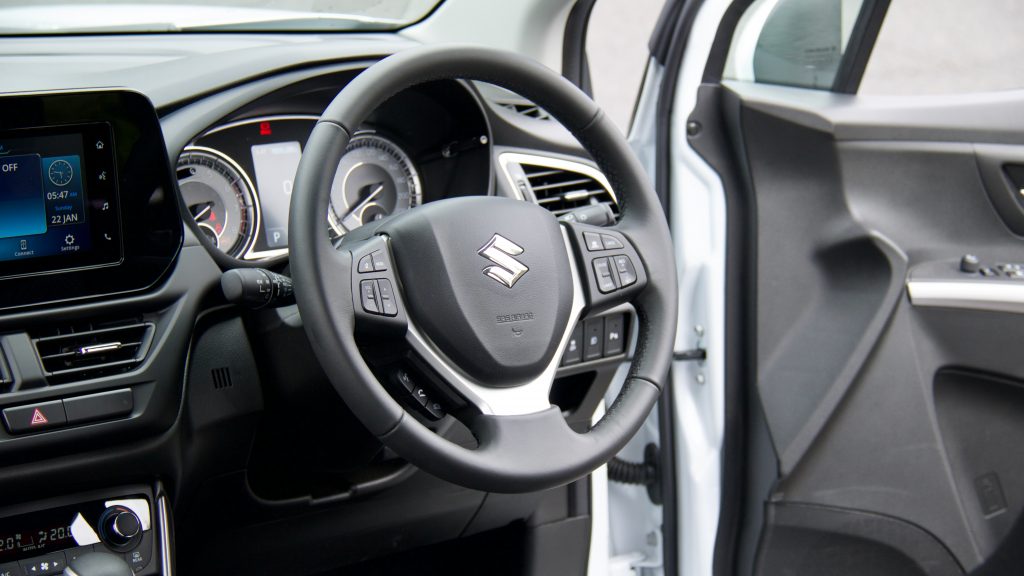
The S-Cross’ cabin is easy to use, with simple and easy to reach controls where you’d expect them to be. In a world where cars are featuring fewer and fewer physical controls, it’s a pleasant change. The only exceptions are the information system, which we’ll get to later and the carry-over steering wheel, which features inconveniently located hands-free calling buttons on the lower left which feel very tacked on. Storage throughout is reasonable enough, with a centre console, medium sized glovebox and relatively capacious door bins. Lacking is a phone storage area of cubby, with the space ahead of the gear shifter a bit too poky especially for larger sized phones.
The front (and back) rows are covered in a simple, but pleasant to look at – and touch – fabric. The seats themselves could feature better bolstering and support, though we found it easy enough to find a comfortable seating position. Many drivers will appreciate the driver’s seat height giving a fairly commanding view ahead. Buyers in colder parts of Australia (or who just feel the cold) will appreciate the toasty combination of cloth seats with heating for the front row. Ahead of the driver is a new (to the S-Cross) colour LCD infomation display flanked by an analog tachometer and speedometer. It’s a bit dated in 2023’s year of fully digital instrument clusters, but it still gets the job done.
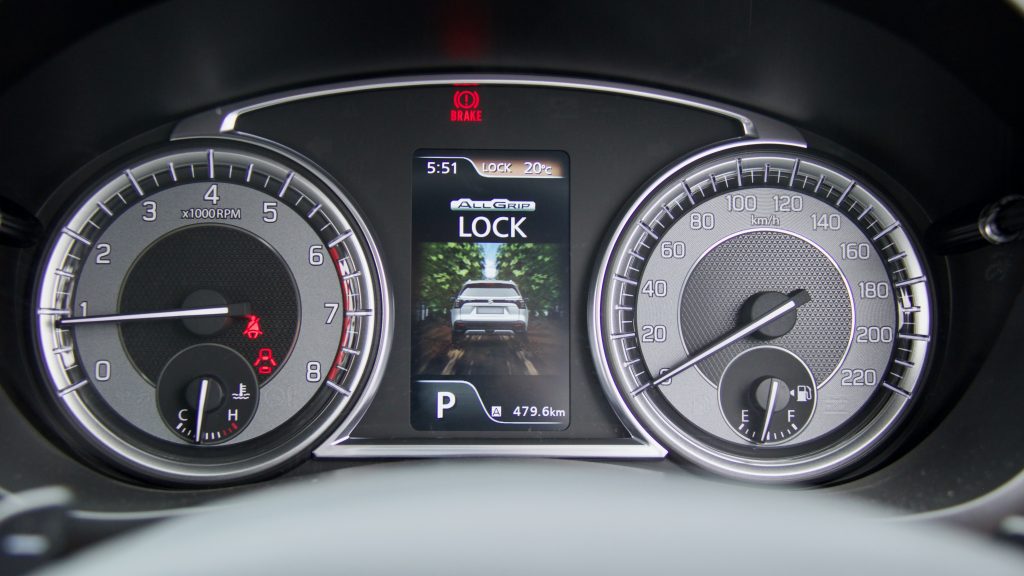
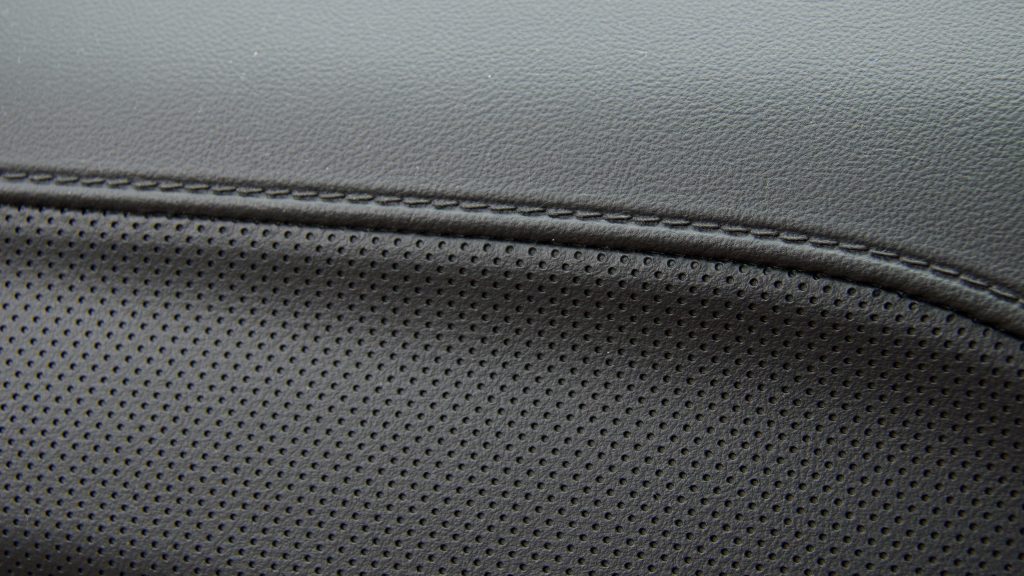
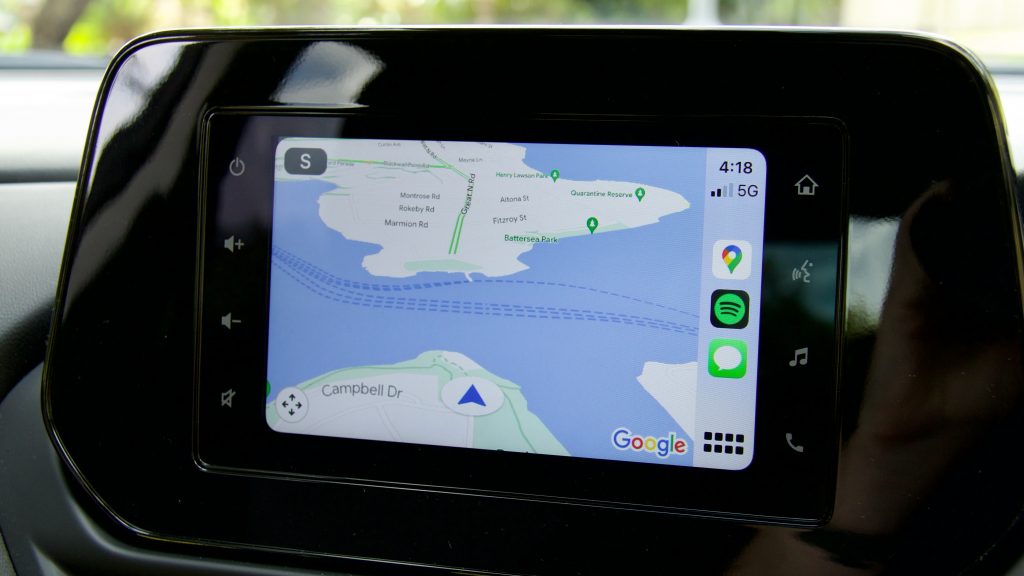
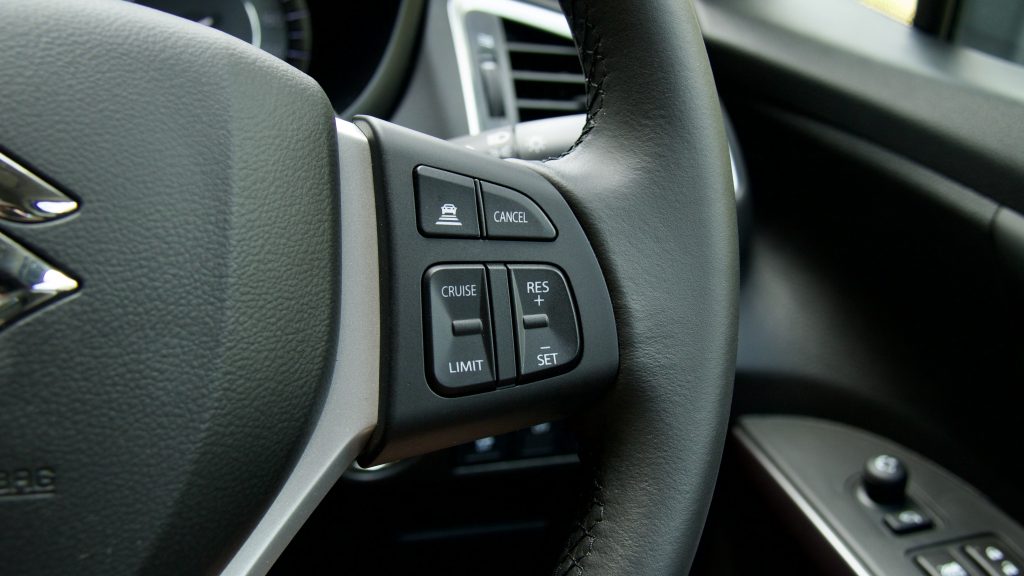
Infotainment in the 2023 Suzuki S-Cross Allgrip is handled by a 7.0-inch screen, with Apple CarPlay and Android Auto and AM/FM/DAB radio. The screen itself is mounted tablet style in the centre of the dash, but is on the smaller size. Unfortunately, the screen surround is designed for the larger 9 inch unit found in the S-Cross premium with the large bezels making the display look smaller than it actually is, and the whole system feels quite aftermarket. The display isn’t the sharpest or smoothest on the market and Suzuki’s information software gets the job done, but feels quite dated and a bit laggy at times.
Sound from the six-speaker sound system is acceptable, with reasonable clarity but is lacking bass. A sore point are the touch sensitive infotainment buttons which aren’t the easiest to find or use while on the go – changing volume without a dial can also be frustrating at times. For those who use phone mirroring, once in Apple CarPlay or Android Auto, the dated nature of the system mostly fades into the background. The S-Cross is severely lacking in USB charging point, with a single USB-A port for the whole car which doubles as the information system.
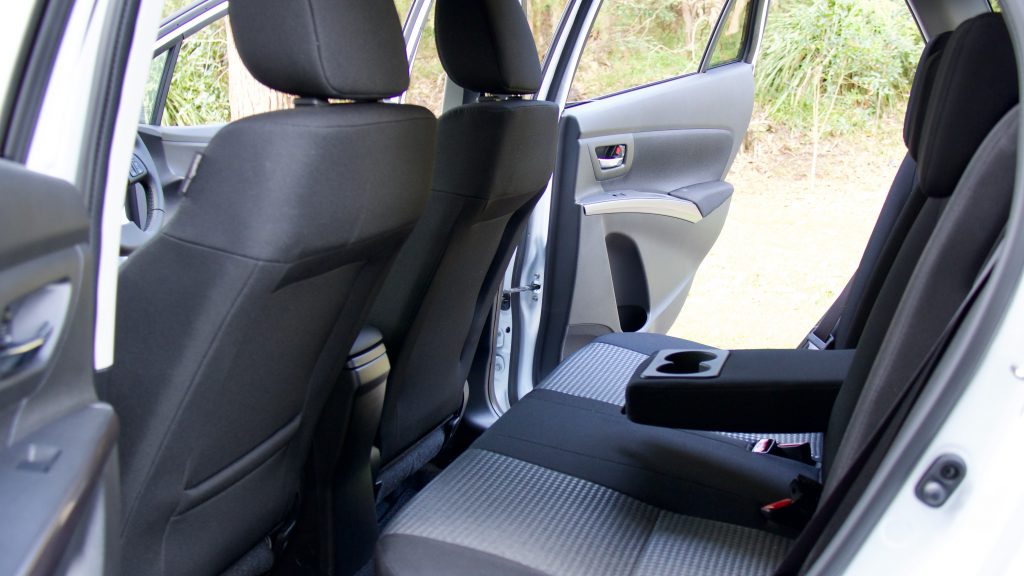
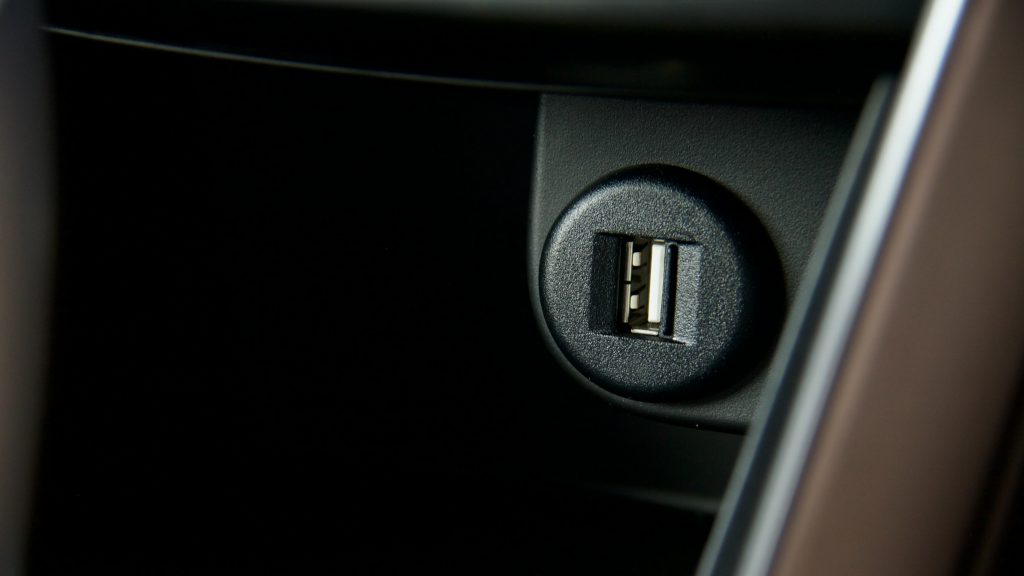
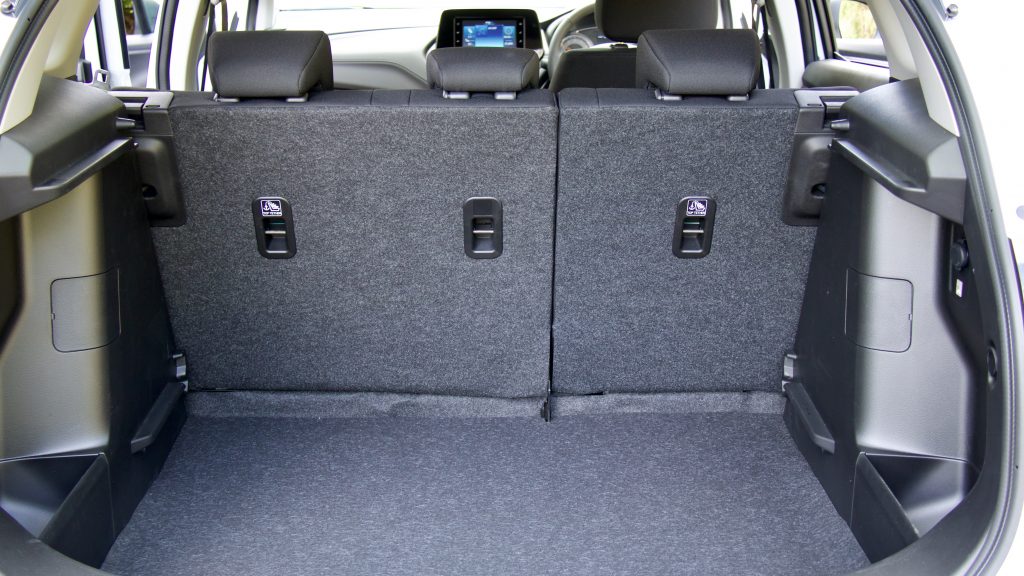
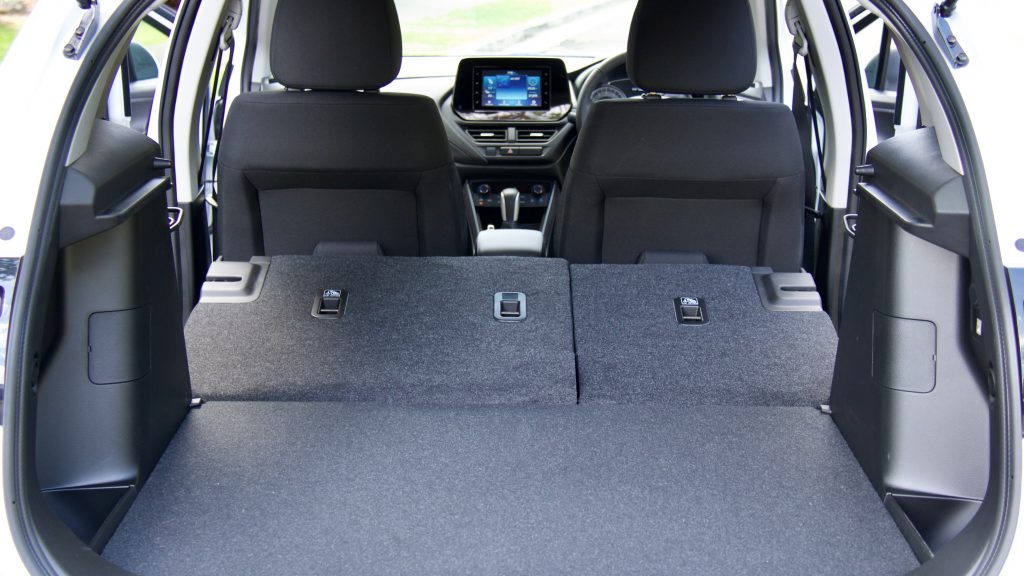
The rear row of the S-Cross is reasonably spacious, with good head room, thanks to the boxier shape of the rear. Foot and leg room is less generous, and adults might feel a bit cramped on longer journeys. For shorter trips, two adults should fit with reasonable comfort, three at a pinch. Children and younger teens will find the rear seat comfortable, and three children (without booster seats) should fit reasonably comfortably. Unfortunately for rear seat occupants, amenities are slim. A fold down centre armrest with two drink holders, a single map pocket and door mounted bottle holders are all second row passengers are treated to, with no USB ports or air vents.
Things are more positive in the boot, with 430-litres of storage space with the second row upright putting it towards the top of the small SUV class – much larger than 291L space in the Subaru Crosstrek and the Kia Seltos edging it out slightly at a mere 3 litres larger at 433L. Folding the second row creates a useful 1,230L load space. Under the adjustable boot floor sits a space saver spare – we’d have liked to have seen a full sized spare given the off-road capability the S-Cross had, though in today’s market, we’re lucky to see a spare at all. The only other feature in the rear is a 12 volt socket – there are no handy hooks for organising shopping.
Service & Warranty: 7.5/10
Suzuki’s warranty package for the 2023 Suzuki S-Cross Allgrip covers five years and unlimited kilometres, which is matched by Subaru on the Crosstrek, but Kia bests both with seven years and unlimited kilometres of warranty. The S-Cross comes with a complimentary one year of roadside assistance, but is extended by a year with each scheduled service, up to a maximum of five years of roadside assistance. The Crosstrek only receives a singular year of complimentary membership to a local roadside assistance program, but again the Seltos takes home the trophy, with an included year of roadside assistance, which can be extended by a year with each scheduled logbook service at a Kia dealership for up to eight years.
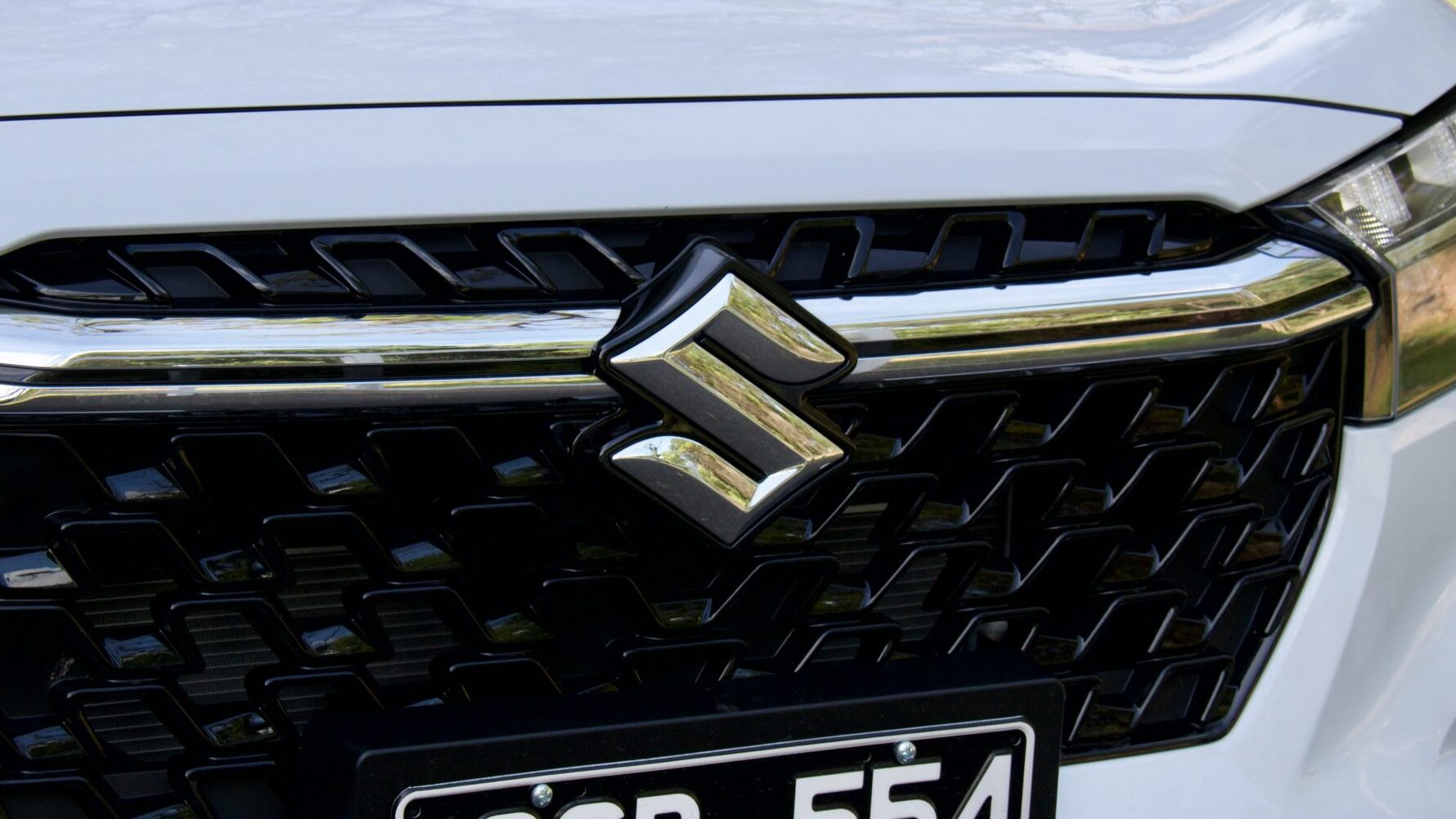
The S-Cross must be serviced every 10,000kms, or every 12 months (whichever comes first). Suzuki’s capped price service program covers the first five years/50,000kms of driving, and over this time will cost $1,985. The Crosstrek has a longer service interval period of every 15,000kms, or every 12 months and Subaru’s capped price servicing program covering the the same first 5 years, but 75,000kms of driving. Over this period, it is the most expensive of this group, costing a higher $2373.19 to service. The Seltos has the same service intervals as the S-Cross, but the program covers a longer seven years/70,000kms of driving. Over the first five years, the Kia will cost slightly more to service than the S-Cross at a total of $2187.
The 2023 Suzuki S-Cross Allgrip DiscoverAuto Rating: 7.2/10
Suzuki’s updates to the 2023 Suzuki S-Cross Allgrip might not have created an ‘all new’ model, but there are definitely improvements to be found over the previous model. We appreciated the relatively peppy performance and agile handling ability – those who like to venture off road from time to time will appreciate the AWD system’s capabilities. The interior, while not the first word in excitement, is easy to live with and use.
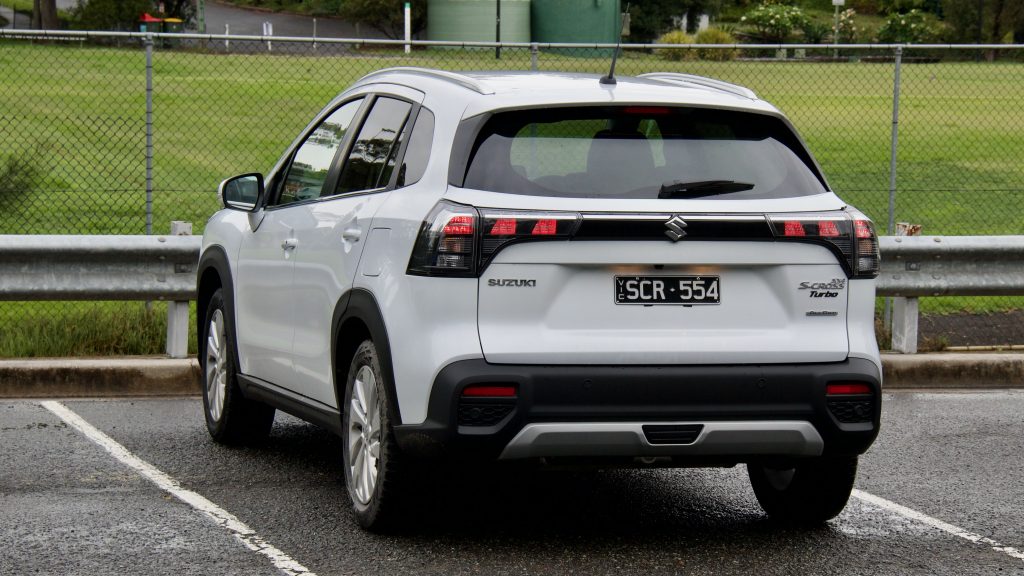
We would however find it difficult to justify purchasing an S-Cross – the value proposition needs to be improved, with plenty of competition that offer more for less coin. Though the S-Cross also offers a cheaper two-wheel drive version, it’s not that much cheaper to make the value equation better and given we wager most drivers won’t ever venture off the bitumen – comparing the S-Cross to other similar 2WD small SUVs makes the value proposition even worse. Look past the pricing however and it’s clear that there’s an appealing package with the S-Cross, especially if you’re after a simple small SUV that’s nice to drive.
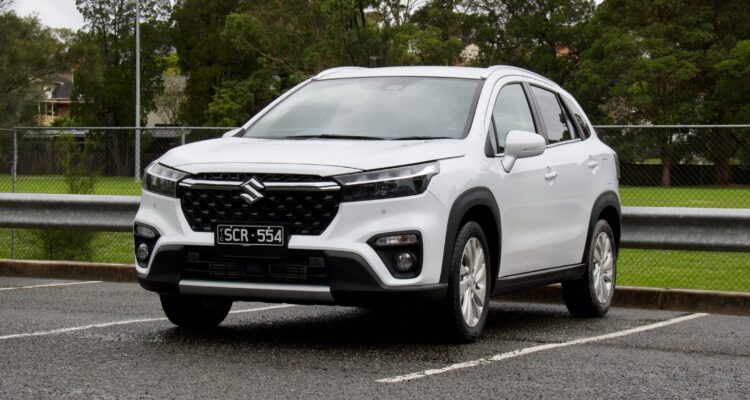
Leave a Reply